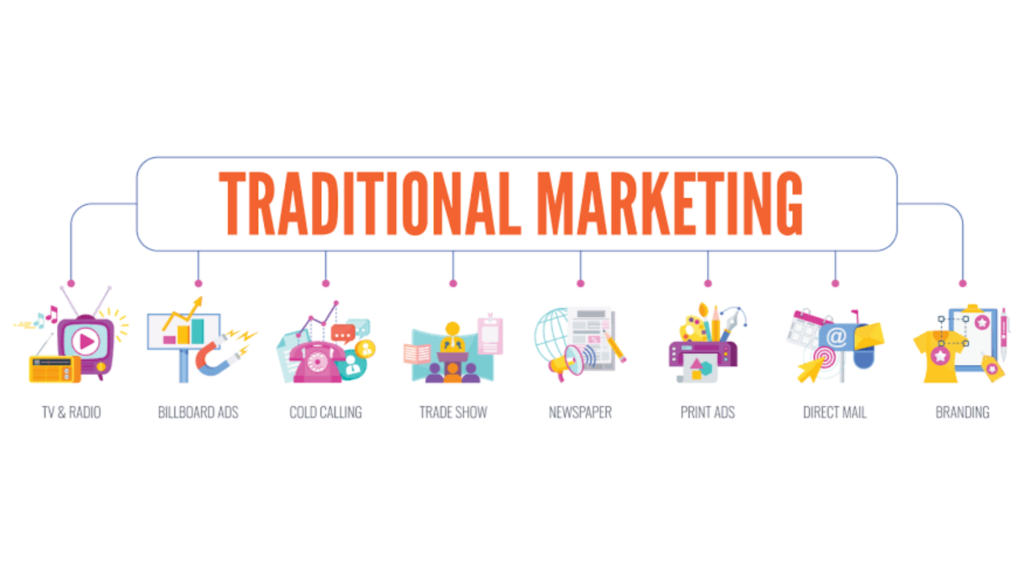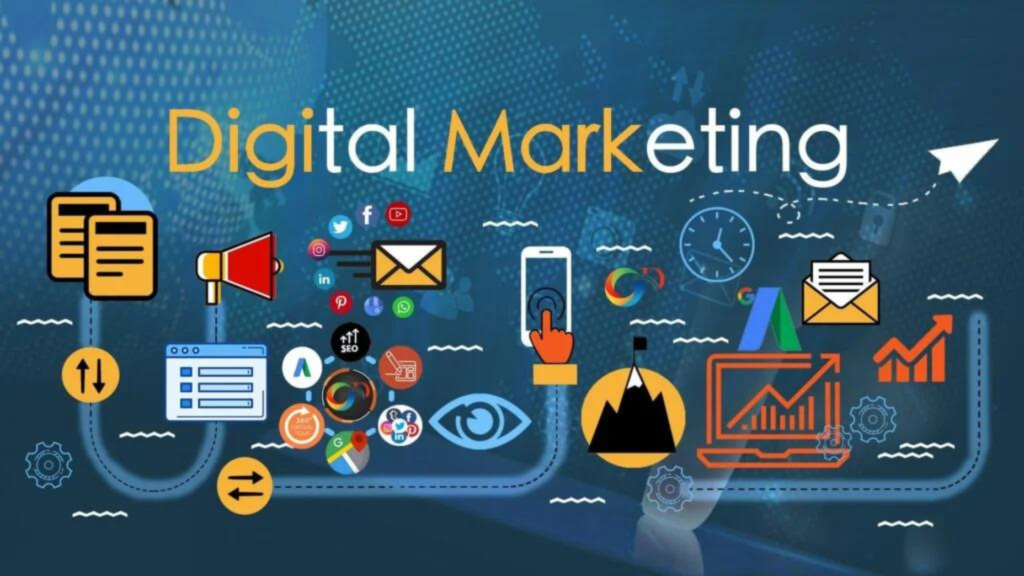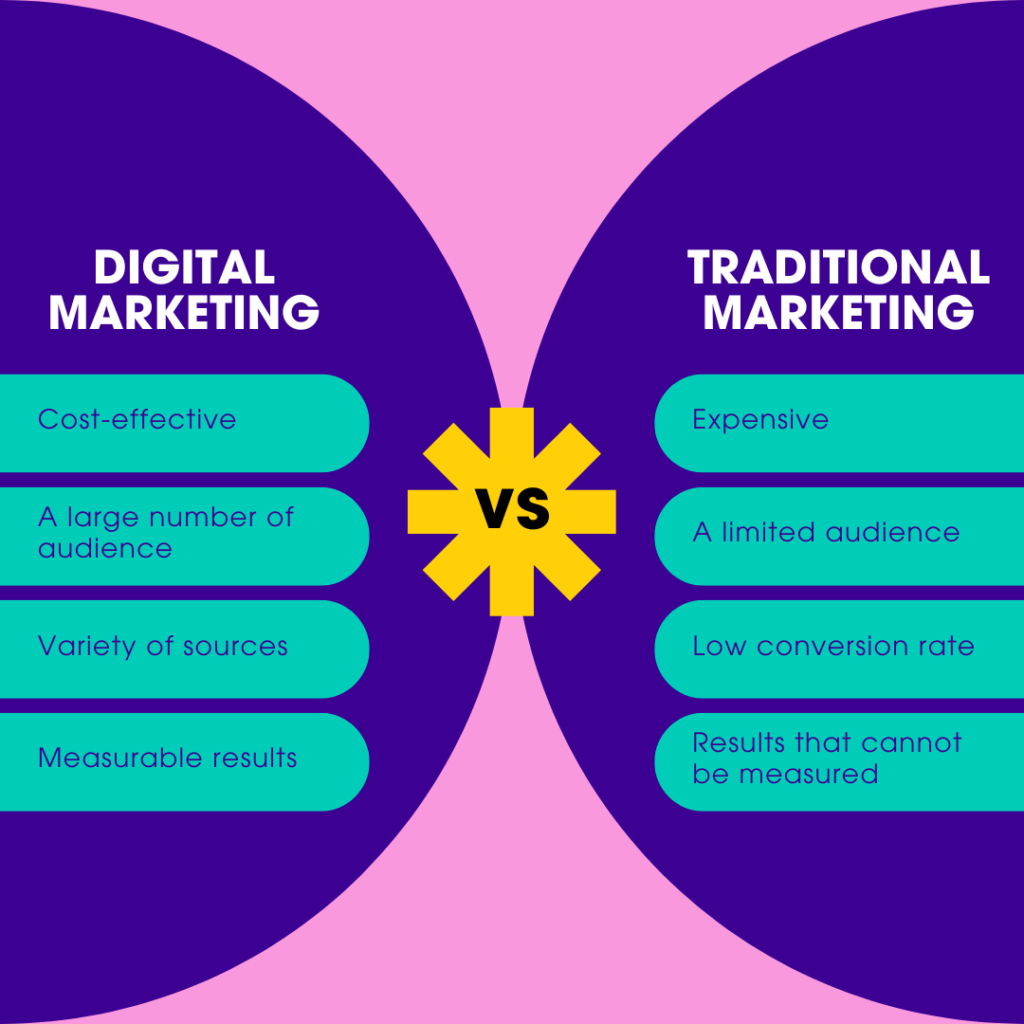Explore the differences between traditional and digital marketing, their pros and cons, and how to choose the right strategy for your business success.
Introduction
In the evolving landscape of business, marketing strategies have significantly transformed over the years. Traditional marketing, which includes methods like print advertisements, billboards, TV, and radio commercials, has been the cornerstone of advertising for decades. It relies on tangible media and has been instrumental in building brand awareness and trust among consumers.
However, with the advent of the internet and digital technologies, a new form of marketing has emerged—Digital Marketing. This modern approach leverages online platforms, social media, search engines, and email to reach consumers. Digital marketing has revolutionized the way businesses connect with their audience by offering targeted, cost-effective, and measurable advertising solutions.
The debate between traditional marketing and digital marketing centers around their effectiveness, reach, cost, and adaptability in today’s fast-paced, technology-driven world. Understanding the differences between these two approaches is crucial for businesses aiming to craft an effective marketing strategy that resonates with their target audience.
What is Traditional Marketing?

Traditional marketing refers to any type of marketing that isn’t online. It includes a wide range of offline advertising methods, from print ads and billboards to TV and radio commercials. This form of marketing has been around for decades and remains a trusted method for reaching a broad audience.
Despite its age, traditional marketing still holds a valuable place in the advertising world. TV and radio ads, for example, can reach millions of viewers and listeners simultaneously, making them powerful tools for brand awareness. Print media, such as newspapers and magazines, provides a tangible way for consumers to engage with content, often leaving a lasting impression.
However, traditional marketing also has its downsides. The cost of running large-scale campaigns can be prohibitive, especially for small businesses. Additionally, measuring the effectiveness of these campaigns can be challenging, with limited data available to track ROI.
What is Digital Marketing?

Digital marketing encompasses all marketing efforts that use an electronic device or the internet. Businesses leverage digital channels such as search engines, social media, email, and other websites to connect with current and prospective customers. This form of marketing has grown exponentially over the past decade and continues to evolve rapidly.
One of the biggest advantages of digital marketing is its ability to target specific audiences. Whether it’s through pay-per-click (PPC) advertising, social media marketing, or search engine optimization (SEO), digital marketing allows for precise targeting, ensuring your message reaches the right people at the right time. Moreover, the cost-effectiveness of digital campaigns, combined with the ability to track and measure results in real-time, makes it an attractive option for businesses of all sizes.
Yet, digital marketing also has its challenges. The online space is crowded, making it difficult to stand out. Constantly changing algorithms and platform policies can also make it challenging to maintain a consistent strategy.
Comparing Traditional Marketing vs. Digital Marketing

Reach and Audience Targeting: Traditional marketing is excellent for reaching a broad audience, particularly in specific geographic areas. For example, a local TV ad can reach thousands of viewers in a city. However, it lacks the precision targeting of digital marketing, which can hone in on specific demographics, interests, and behaviors.
Cost and ROI: Traditional marketing often comes with a hefty price tag. Producing a TV commercial or buying a prime-time spot can cost thousands, if not millions, of dollars. On the other hand, digital marketing offers more affordable options, with the ability to scale budgets according to business needs. Moreover, digital marketing provides detailed analytics, making it easier to calculate ROI.
Engagement and Interaction: Traditional marketing is largely a one-way street. Ads are delivered to the audience with little opportunity for interaction. Digital marketing, however, thrives on engagement. Social media platforms, for example, allow businesses to interact with customers directly, fostering relationships and building community.
Flexibility and Adjustability: Traditional marketing campaigns are often set in stone once they launch, with limited room for adjustments. Digital marketing, by contrast, is highly flexible. Campaigns can be tweaked, optimized, or even paused in real-time, allowing for greater adaptability in response to market conditions or consumer behavior.
Tracking and Analytics: The ability to track and measure success is where digital marketing truly shines. With tools like Google Analytics, businesses can monitor every aspect of a campaign, from traffic sources to conversion rates. Traditional marketing, while still trackable to some extent, often lacks this level of detail, making it harder to gauge effectiveness.
Traditional Marketing: Pros and Cons
Pros:
- Tangible Impact: Physical materials like brochures, billboards, and print ads can leave a lasting impression.
- Broad Reach: Effective in reaching local and older audiences who may not be as active online.
- Credibility: Traditional media is often seen as more trustworthy, especially television and print.
- Familiarity: Long-established methods are well-understood by both marketers and consumers.
Cons:
- High Costs: Producing and distributing physical materials or airing TV commercials can be expensive.
- Limited Targeting: Traditional methods often reach a broad audience, making it difficult to target specific demographics.
- Difficult to Measure: Tracking the effectiveness of traditional campaigns is challenging and often relies on estimates.
- Less Flexibility: Once an ad is published or aired, changes are difficult or impossible to make.
Digital Marketing: Pros and Cons
Pros:
- Cost-Effective: Digital marketing can be tailored to fit any budget, from small businesses to large corporations.
- Precise Targeting: Advanced tools allow marketers to target specific demographics based on age, location, interests, and behavior.
- Measurable Results: Analytics tools provide detailed insights into campaign performance, allowing for real-time adjustments.
- Flexibility and Adaptability: Digital campaigns can be easily modified based on performance data, ensuring optimal results.
Cons:
- Requires Technical Knowledge: Successful digital marketing often requires an understanding of various platforms, algorithms, and tools.
- Overwhelming Options: The vast number of digital channels can be overwhelming, making it challenging to choose the right mix.
- Ad Fatigue: Users may become overwhelmed by the sheer volume of digital ads, leading to decreased effectiveness.
- Trust Issues: Digital marketing, especially online ads, can be seen as less trustworthy due to the prevalence of scams and misinformation.
Traditional Marketing Success Story: Coca-Cola’s “Share a Coke” Campaign
Overview: Coca-Cola’s “Share a Coke” campaign, launched in Australia in 2011, is a classic example of a successful traditional marketing campaign. The company replaced its iconic logo on bottles with 150 of the most popular names among Australian teenagers and young adults.
Strategy:
- Personalization: The campaign encouraged people to find bottles with their names and share them with friends and family, creating a personal connection with the brand.
- Mass Media: Coca-Cola used traditional media like billboards, television commercials, and in-store displays to promote the campaign.
- Physical Presence: The physical product itself became a marketing tool, as consumers actively sought out and purchased bottles with specific names.
Results:
- Increased Sales: Coca-Cola saw a 7% increase in sales among young adults, a demographic that had been difficult to engage.
- Global Expansion: Due to its success, the campaign expanded to over 80 countries, with more personalized names added based on local cultures.
- Brand Engagement: The campaign significantly boosted brand engagement, as consumers shared their experiences on social media, even though the campaign was rooted in traditional marketing.
Digital Marketing Success Story: Nike’s “Dream Crazy” Campaign
Overview: Nike’s “Dream Crazy” campaign, launched in 2018, is a powerful example of how digital marketing can create a massive impact. The campaign featured NFL player Colin Kaepernick, known for his kneeling protest during the national anthem, with the tagline, “Believe in something. Even if it means sacrificing everything.”
Strategy:
- Social Media: The campaign was primarily driven by social media platforms like Twitter, Instagram, and YouTube, where the ad quickly went viral.
- Influencer Marketing: By featuring Kaepernick, Nike aligned itself with a social cause, tapping into the influence of a well-known figure who resonated with their target audience.
- Video Content: The centerpiece was a 2-minute video ad that was shared across digital platforms, generating millions of views in a short period.
Results:
- Increased Sales: Despite initial controversy, Nike’s online sales surged by 31% in the days following the launch of the campaign.
- Brand Loyalty: The campaign strengthened Nike’s brand loyalty, particularly among younger, socially-conscious consumers.
- Viral Impact: The ad generated over 80 million views on Twitter alone and sparked widespread discussion, both online and offline.
Conclusion
In conclusion, both traditional and digital marketing have their own unique strengths and play important roles in a well-rounded marketing strategy. The key is understanding your target audience, business goals, and budget to choose the right mix of strategies that will deliver the best results. As the marketing landscape continues to evolve in 2024, businesses that can adapt and integrate both approaches will be best positioned to succeed.
By following this comprehensive guide, you can develop a marketing strategy that not only boosts your business in 2024 but also lays the foundation for long-term growth and success.